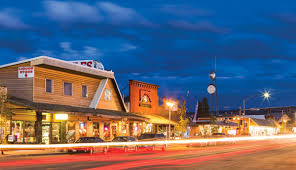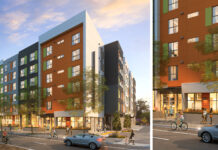 Bozeman Daily Chronicle
Bozeman Daily Chronicle
BOZEMAN, Mont: Ashea Mills was going to college in upstate New York when she saw an ad for seasonal work in Yellowstone National Park in a local paper.
She’d gone through a rough time in her life after the death of a partner who had leukemia, and the opportunity seemed like a great way to get out and try something new. So she quit her job, dropped out of college and moved out west.
The park’s landscape changed her in ways she didn’t expect, she said. Mills left Yellowstone five years later to go back to school, but she came back soon after and settled in Gardiner. She has a husband and two daughters, and she’s the chair of the North Yellowstone Education Foundation. She gets to live in the dreamy, dynamic landscape she fell in love with 20 years ago.
But that dream is becoming less attainable than ever, and it’s taking its toll on the town where she chose to raise a family. Other residents’ perceptions of Gardiner are shifting, too. A study released by the Institute for Tourism and Recreation Research released in September recorded community members before and after infrastructure development as part of the town’s Gateway Project.
The study found there was a marked difference in how residents felt about housing, with 56 percent of residents saying housing was an important issue to them in 2013. That number grew to 70 percent by 2018. Meanwhile, resident satisfaction with housing in Gardiner went down 13 percentage points.
A lot factors into its housing availability. The town is partially landlocked by a National Forest and Yellowstone, so growth is tricky. But one of the biggest concerns was how Airbnb-style vacation rentals and short-term housing has replaced more long-term housing.
“And, honestly, I wasn’t expecting such strong emotions on this issue, but it was evident in the data,” ITRR director Norma Nickerson said in a statement.
Gardiner residents fear vacation rentals are taking over their town. A study done in partnership with HRDC found that the percent change of vacant units in Gardiner used for vacation, recreation or occasional use from 2000 to 2010 rose 159 percent, the Bozeman Daily Chronicle reported.
And home prices keep rising, as they have been for years. The median price of a home in Gardiner was $320,000 for homes sold so far in 2018, according data compiled by Park County Board of Realtors president Michael Wojdylak.
These rising costs have made it hard for even middle-income earners to afford to live in Gardiner, and it’s had a profound impact on the town’s makeup. The school system has lost about 100 students in the past five or six years, Mills estimates. Just three years ago, the high school had 85 students, the Livingston Enterprise reported in June. This year, the district expected 58 students to be enrolled.
For a school district that’s consistently ranked the best in Montana, that’s a big deal. If the school gets much smaller, it won’t even be eligible to be ranked on most lists, NYEF member and Gardiner School Board trustee George Bumann said.
Just last year, the district had to deal with a $400,000 budget shortfall due to lower enrollment, causing it to eliminate 7.75 full-time positions, the Enterprise reported, though they were later able to add back 0.9 positions. That comes out to about a quarter of its staff, Bumann said.
The blow to its budget has forced the school board to get creative, finding funding through the educational foundation for extracurricular activities and services like field trips and mental health education programs that had been cut. NYEF was even able to bring back a para-educator and community program coordinator position through a grant it obtained.
The district is also looking for ways to attract and retain teachers, as it expects many who have been in the community for a long time to retire over the next few years, Bumann said. There have been some initial talks about developing land adjacent to the school to provide affordable housing for teachers, something that’s common for many small districts in Montana, but there are no firm plans yet, he said.
That conversation regularly expands to housing affordability in general, and a number of options are being considered.
“The solutions to providing affordable housing should involve diverse approaches and mechanisms _ there is no one solution,” HRDC wrote in its housing study.
Some people used what Bumann called the “I” word, and said they thought the town should become more incorporated to have more say in its future, ITRR reported. This means leadership can be fractured, Mills said.
People have also talked about establishing housing covenants that would prohibit housing from being used commercially, and some are putting their lands in trusts. Working with nonprofits like HRDC is also being considered.
“Basically, everything is on the table,” Mills said. AP






